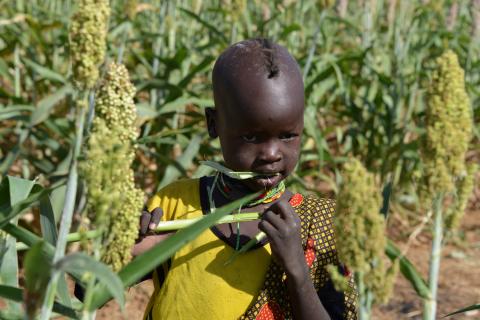Child height gain is associated with consumption of animal-source foods in livestock-owning households in Western Kenya
Research snapshot1
Animal-source foods (ASF) such as meat, milk and eggs are nutrient-dense and excellent sources of protein, calcium, B vitamins, vitamin A and iron. The use of ASF can promote diversity in the diet of young children, necessary for optimal child growth and development. Household livestock may directly provide ASF for child consumption or provide income with which families can purchase ASF. This paper reports the findings of a study to assess the relationships between the consumption of ASF and child growth and evaluate the household livestock correlates of child consumption of ASF.
The authors conducted a longitudinal cohort study of anthropometry and three-day feeding recall among 874 children under five years old from a 1,800-household catchment area in Western Kenya between June 2014 and May 2015. Data were also collected on wealth, livestock ownership and livestock diseases in the same households. Linear and negative binomial mixed models were used to evaluate the relationships between household livestock characteristics, reported consumption of ASF and child growth. Results were adjusted for predetermined potential confounders, including child age, child sex, number of household members, household wealth, ownership of other livestock and off-farm income.
Results show that, among children over six months of age, reported frequency of egg and milk consumption was associated with increased monthly height gain (for each additional report of consumption over three days = 0·010 (95% CI 0·002, 0·019) cm/month and 0·008 (95% CI 0·004, 0·013) cm/month, respectively. Poultry ownership was associated with higher reported frequency of egg, milk and chicken consumption (adjusted incidence rate ratio (95% CI)=1·3 (1·2, 1·4), 1·4 (1·1, 1·6) and 1·3 (1·1, 1·4), respectively). Some livestock diseases were associated with lower reported frequency of ASF intake (livestock digestive diseases-adjusted incidence rate ratio (95% CI)=0·89 (0·78, 1·00)).
The authors conclude that child height gain was associated with milk and egg consumption in this cohort and that ASF consumption was related to both household livestock ownership and animal health. Findings suggest that the promotion of egg and milk consumption can support linear growth among children and that both the ownership and health of household livestock can influence child feeding practices.
Footnotes
1Mosites E, Aol G, Otiang E, Bigogo G, Munyua P, Montgomery J, Thumbi S. (2017). Child height gain is associated with consumption of animal-source foods in livestock-owning households in Western Kenya. Public Health Nutrition, 20(2), 336-345.

